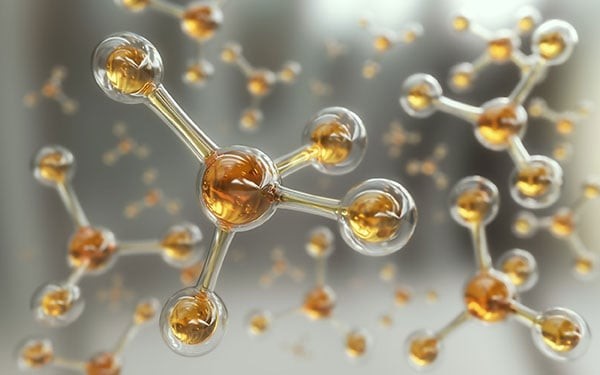Energy, the fundamental currency of the universe, powers every process from the grand motion of galaxies to the subtle flicker of a lightbulb. At its core, energy is defined as the ability to do work, the action of applying force to move an object. While energy manifests in numerous forms, two primary types reign supreme in our daily experiences and scientific understanding: potential energy and kinetic energy. Although distinctly different, these two forms are intrinsically linked, constantly interchanging and shaping the world around us. To truly grasp the concept of energy, it’s essential to delve into the definitions, differences, and fascinating relationship between potential and kinetic energy.
Defining Potential and Kinetic Energy
To understand how potential and kinetic energy interact, we must first clearly define each concept.
What is Potential Energy?
Potential energy is the stored energy within an object or system due to its position, arrangement, or condition. It’s the energy of potential, waiting to be released and converted into other forms. Think of it as energy in waiting. This stored energy has the capacity to perform work but is not actively doing so. The key characteristic of potential energy is that it is energy of position.
Imagine an archer’s bow drawn taut. The act of pulling back the bowstring stores energy within the bow. This stored energy is potential energy. It’s not causing movement yet, but it has the potential to propel an arrow forward once the string is released. This potential arises from the displacement of the bowstring from its equilibrium position. Whether through elastic forces, gravity, or chemical bonds, potential energy is always associated with a system poised for change.
What is Kinetic Energy?
Kinetic energy, in contrast, is the energy of motion. It is the energy an object possesses due to its movement. Anything that is moving – from a speeding car to a tiny vibrating atom – possesses kinetic energy. This form of energy is intuitively easier to understand because we directly observe moving objects and recognize their inherent energy.
Kinetic energy is created when potential energy is unleashed. When the archer releases the bowstring, the stored potential energy transforms into kinetic energy, launching the arrow into flight. Gravity, elastic forces, and various other catalysts can trigger this conversion from potential to kinetic energy.
The amount of kinetic energy an object possesses depends on two crucial factors: its mass and its velocity. The greater the mass and the faster the velocity, the higher the kinetic energy. Motion itself is diverse, encompassing various forms such as:
- Translational motion: Movement from one point to another (like a car driving down a road).
- Rotational motion: Movement around an axis (like a spinning wheel).
- Vibrational motion: Back-and-forth movement around an equilibrium point (like atoms in a solid).
These forms, or combinations of them, constitute the vast majority of kinetic energy observed in the universe. For simplicity, kinetic energy is often categorized into three subcategories: vibrational kinetic energy (energy from vibration), rotational kinetic energy (energy from rotation), and translational kinetic energy (energy from movement from one location to another). These subcategories encompass nearly all energy in motion throughout the known universe.
Key Differences Between Potential and Kinetic Energy
The fundamental distinction between potential and kinetic energy lies in their state: potential energy is stored energy, while kinetic energy is energy in motion. One represents “energy that could be,” and the other “energy that is.”
| Feature | Potential Energy | Kinetic Energy |
|---|---|---|
| State | Stored, inactive energy | Energy in motion, active energy |
| Basis | Position, condition, arrangement | Velocity, movement |
| Velocity | Not a factor | Primary determining factor |
| Action | Energy to be released | Energy actively doing work |
| Transformation | Can be converted into kinetic energy | Can be derived from potential energy |


Velocity highlights another key difference. Velocity, the measure of how fast an object is moving, is paramount in determining kinetic energy. However, velocity plays no role in potential energy, which is defined solely by position or condition, independent of motion. In fact, velocity is the most critical variable in the kinetic energy equation, while it is completely absent from potential energy calculations.
The Interplay: Relationship Between Potential and Kinetic Energy
Despite their differences, potential and kinetic energy are not mutually exclusive but rather deeply intertwined. They are complementary forms of energy that constantly convert into one another.
The crucial relationship is that potential energy is always converted into kinetic energy when released. Conversely, kinetic energy is often required, directly or indirectly, to store energy as potential energy. Consider a simple example: a rock perched on a cliff edge. It possesses gravitational potential energy due to its height. It didn’t require kinetic energy to store this potential energy in its current state. However, the geological processes, like erosion, that brought the rock to the precarious cliff edge involved kinetic energy. Thus, even potential energy often has roots in prior kinetic energy transformations.
This continuous exchange between potential and kinetic energy is a fundamental aspect of the universe, especially evident in our everyday world. From the water cycle driven by solar energy to the simple act of bouncing a ball, potential and kinetic energy are constantly shifting roles.
Real-World Examples of Potential and Kinetic Energy
Distinguishing between potential and kinetic energy in real-world scenarios can sometimes be challenging, even with clear definitions. Let’s explore some common examples to solidify these concepts.
1) Planets
The celestial dance of planets orbiting stars exemplifies kinetic energy in action. Planets are constantly in motion, drawn towards the massive central star by gravity. This gravitational pull causes them to “fall” towards the star, but their inertia keeps them moving forward, resulting in a perpetual orbit. This orbital motion, inherent to all planets, is a manifestation of kinetic energy.
2) Rubber Bands
A rubber band demonstrates both potential and kinetic energy depending on its state. When you stretch a rubber band, you are doing work to deform it, and this work is stored as elastic potential energy within the stretched material. Upon release, this potential energy transforms into kinetic energy, potentially launching the rubber band itself or an object it’s connected to, like a projectile from a slingshot.
3) Rivers
Rivers primarily showcase kinetic energy. The flowing water, constantly moving downstream due to gravity, possesses kinetic energy. The faster the flow and the greater the volume of water, the more kinetic energy the river carries. The only instance where a river might exhibit potential energy is when it’s dammed. A dam creates an artificial reservoir, where water held at a height gains gravitational potential energy, ready to be converted into kinetic energy to generate hydroelectric power when released.
Exploring Specific Forms of Energy
Beyond these general examples, various specific forms of energy can be categorized as either potential or kinetic.
What is the Potential Energy of an Electron?
Electrons, though incredibly tiny, are always in motion around the nucleus of an atom. This motion signifies kinetic energy. However, electrons also possess potential energy due to their position within the electric field of the nucleus. The potential energy of an electron is determined by its distance from the nucleus and the charge of the nucleus. Calculating this potential energy involves complex formulas from quantum mechanics, such as:
U(r) = -qeV(r) = -keqe2/r
Where:
- U(r) is potential energy as a function of distance (r)
- qe is the electron charge
- V(r) is the electric potential
- ke is Coulomb’s constant
The total energy of an electron is the sum of its kinetic and potential energies, also described by a more complex quantum mechanical formula.
Is a Battery Kinetic or Potential Energy?
Batteries are fundamentally devices for storing chemical potential energy. The energy is stored within the chemical bonds of molecules within the battery’s electrolyte. “Stored” is the key word here, classifying batteries as sources of potential energy. This chemical potential energy is released and converted into electrical energy when a circuit is completed, allowing the battery to power devices. Biofuels and fossil fuels are other common examples of stored chemical potential energy.
Is Electrical Energy Potential or Kinetic?
Electrical energy can exist in both potential and kinetic forms. Before it is utilized to power devices, electrical energy is considered potential energy. It represents the potential to do work by moving electric charges. However, once electrical energy is put to use, such as powering a motor or lighting a bulb, it transforms into kinetic energy. This kinetic energy can manifest as motion (in a motor), light, heat, or sound.
Is Sound Energy Potential or Kinetic?
Sound energy exhibits characteristics of both potential and kinetic energy, though it is primarily experienced and understood in its kinetic form. Sound waves in air are longitudinal waves, meaning they cause compressions and rarefactions of air molecules, setting them in motion. This motion of air molecules constitutes kinetic energy. In solids and liquids, sound propagation is more complex and involves both kinetic and potential energy interactions between molecules.
Is Thermal Energy Potential or Kinetic?
Thermal energy, also known as heat, is technically a combination of both potential and kinetic energy at the molecular level. At its core, thermal energy is related to the random motion of atoms and molecules within a substance. This motion is kinetic energy. As substances heat up, these molecules move more vigorously, colliding with each other. These collisions and interactions also involve intermolecular forces, which can be associated with potential energy. Therefore, thermal energy is a complex interplay of both kinetic and potential energy at the microscopic scale.
Is Radiant Energy Potential or Kinetic?
Radiant energy, which includes light, radio waves, X-rays, and other forms of electromagnetic radiation, is classified as kinetic energy. It is energy that travels in electromagnetic waves across the electromagnetic spectrum. Like electrons, radiant energy is a form of kinetic energy carried by non-physical entities – electromagnetic fields – rather than the motion of matter in the traditional sense.
Variations of Potential Energy
Potential energy can be further categorized into sub-types based on the force or mechanism responsible for storing the energy. Two primary types are particularly important:
What is Chemical Potential Energy?
Chemical potential energy is stored within the chemical bonds that hold atoms together in molecules. These bonds are essentially forces of attraction between atoms. Breaking these bonds releases the stored potential energy, converting it into kinetic energy, often in the form of heat and light. Chemical reactions, such as combustion (burning) or metabolism in living organisms, are processes that release chemical potential energy. The strength of the chemical bonds dictates the amount of kinetic energy released when they are broken.
What is Gravitational Potential Energy?
Gravitational potential energy is the energy stored in an object due to its position in a gravitational field, specifically its height above a reference point, usually the Earth’s surface. The higher an object is raised, the more work is done against gravity, and the more gravitational potential energy it gains. This potential energy is directly proportional to the object’s mass, the acceleration due to gravity, and its height. When the object is allowed to fall, gravity converts this potential energy into kinetic energy.
Potential Energy in Physics and Chemistry
The concept of potential energy plays a crucial role in both physics and chemistry, although the underlying mechanisms differ.
What is Potential Energy in Physics?
In physics, potential energy is often associated with gravitational potential energy. Gravity is a fundamental force governing large-scale interactions in the universe and is central to classical physics and Einstein’s theory of general relativity. Gravitational potential energy arises from the gravitational force and the position of objects within a gravitational field.
What is Potential Energy in Chemistry?
In chemistry, potential energy is primarily understood as chemical potential energy. Chemistry focuses on the interactions of atoms and molecules, and chemical potential energy stored in molecular bonds is the driving force behind chemical reactions. The release and absorption of chemical potential energy are fundamental to understanding chemical processes.
Formulas for Kinetic Energy and Potential Energy
Quantifying kinetic and potential energy requires specific formulas. While these formulas are relatively straightforward, they are powerful tools for calculating and understanding energy transformations.
Kinetic Energy Formula
The formula for kinetic energy (KE) is:
KE = 1/2 mv²
Where:
- KE represents kinetic energy (measured in Joules, J)
- m is the mass of the object (measured in kilograms, kg)
- v is the velocity of the object (measured in meters per second, m/s)
This formula highlights the direct relationship between kinetic energy, mass, and the square of velocity. Doubling the velocity quadruples the kinetic energy.
Gravitational Potential Energy Formula
The formula for gravitational potential energy (GPE) is:
GPE = mgh
Where:
- GPE represents gravitational potential energy (measured in Joules, J)
- m is the mass of the object (measured in kilograms, kg)
- g is the acceleration due to gravity (approximately 9.8 m/s² on Earth)
- h is the height of the object above the reference point (measured in meters, m)
This formula shows that gravitational potential energy is directly proportional to mass, gravitational acceleration, and height.
Elastic Potential Energy Formula
For elastic potential energy stored in a spring or elastic material, the formula is:
EPE = 1/2 kx²
Where:
- EPE represents elastic potential energy (measured in Joules, J)
- k is the spring constant (a measure of the spring’s stiffness)
- x is the displacement or stretch length of the spring from its equilibrium position (measured in meters, m)
The unit of energy in all these formulas, and for all forms of energy, is the Joule (J), defined as 1 kg⋅m²/s².
Energy Everywhere
From the largest cosmic structures to the smallest subatomic particles, energy in its potential and kinetic forms is ubiquitous. Understanding these two fundamental types of energy, their differences, and their interrelationship is crucial for comprehending the physical world. While the concept of energy extends far beyond these two categories, grasping potential and kinetic energy provides a solid foundation for exploring more complex energy phenomena.
In essence, remember these two key takeaways: stationary objects poised to move possess potential energy, while objects in motion embody kinetic energy. This simple distinction unlocks a deeper understanding of the dynamic and energetic universe we inhabit.
Brought to you by compare.edu.vn
Sources:
[1] Master Concepts in Chemistry. What’s energy and why is it defined as the ability to do work? https://masterconceptsinchemistry.com/index.php/2017/12/18/whats-energy-defined-ability-work/. Accessed November 16, 2020.
[2] Priddy B. What Is the Meaning of Kinetic Energy? https://sciencing.com/meaning-kinetic-energy-6646801.html. Published March 2, 2019. Accessed November 9, 2020.
[3] Work, Energy, and Power. The Physics Classroom. https://www.physicsclassroom.com/Class/energy/u5l1c.cfm. Accessed November 9, 2020.
[4] Energy: Potential and Kinetic Energy. Infoplease. https://www.infoplease.com/encyclopedia/science/physics/concepts/energy/potential-and-kinetic-energy. Accessed November 9, 2020.
[5] Fenio, B. Rolling Race: A Spinning Science Activity. Published March 23, 2017. https://www.scientificamerican.com/article/rolling-race/. Accessed November 15, 2020
[6] Science World. Elastic Energy. https://www.scienceworld.ca/resource/elastic-energy/. Accessed November 16, 2020.
[7] University of Calgary Energy Education. Energy from Water. https://energyeducation.ca/encyclopedia/Energy_from_water. Accessed November 15, 2020.
[8] University of Tennessee, Knoxville. Electric Potential. http://labman.phys.utk.edu/phys222core/modules/m2/Electric%20potential.html#:~:text=The%20potential%20energy%20of%20the,2.18*10%2D18%20J. Accessed November 15, 2020
[9] Dusto A. Potential Energy: What Is It & Why It Matters (w/ Formula & Examples). Sciencing. https://sciencing.com/potential-energy-what-is-it-why-it-matters-w-formula-examples-13720804.html. Published December 5, 2019. Accessed November 10, 2020
[10] U.S. Energy Information Agency. Forms of Energy. https://www.eia.gov/energyexplained/what-is-energy/forms-of-energy.php. Accessed November 15, 2020.
[11] Sound Waves and Music – Lesson 1 – The Nature of a Sound Wave: Sound as a Longitudinal Wave https://www.physicsclassroom.com/class/sound/Lesson-1/Sound-as-a-Longitudinal-Wave Accessed November 15, 2020.
[12 University of Illinois Department of Physics. Q&A: Kinetic and Potential. https://van.physics.illinois.edu/qa/listing.php?id=1768&t=kinetic-and-potential#:~:text=Sound%3A%20In%20a%20solid%2C%20this,microscopic%20scale%20of%20moving%20molecules.. Accessed November 15, 2020.
[13] Solar Schools. Radiant Energy. https://www.solarschools.net/knowledge-bank/energy/types/radiant. Accessed November 15, 2020.
[14] CK-12. Chemical Potential Energy. https://www.ck12.org/chemistry/chemical-potential-energy/lesson/Chemical-Potential-Energy-CHEM/. Accessed November 15, 2020.
[15] Solar Schools. Gravitational Energy. https://www.solarschools.net/knowledge-bank/energy/types/gravitational. Accessed November 15, 2020.
[16] Hyperphysics. Gravitational Potential Energy. http://hyperphysics.phy-astr.gsu.edu/hbase/gpot.html. Accessed November 16, 2020.
[17] Kinetic & Potential Energy. Kinetic & Potential Energy – Web Formulas. https://www.web-formulas.com/Physics_Formulas/Kinetic_Potential_Energy.aspx. Accessed November 9, 2020.
All images licensed from Adobe Stock. Featured image:
